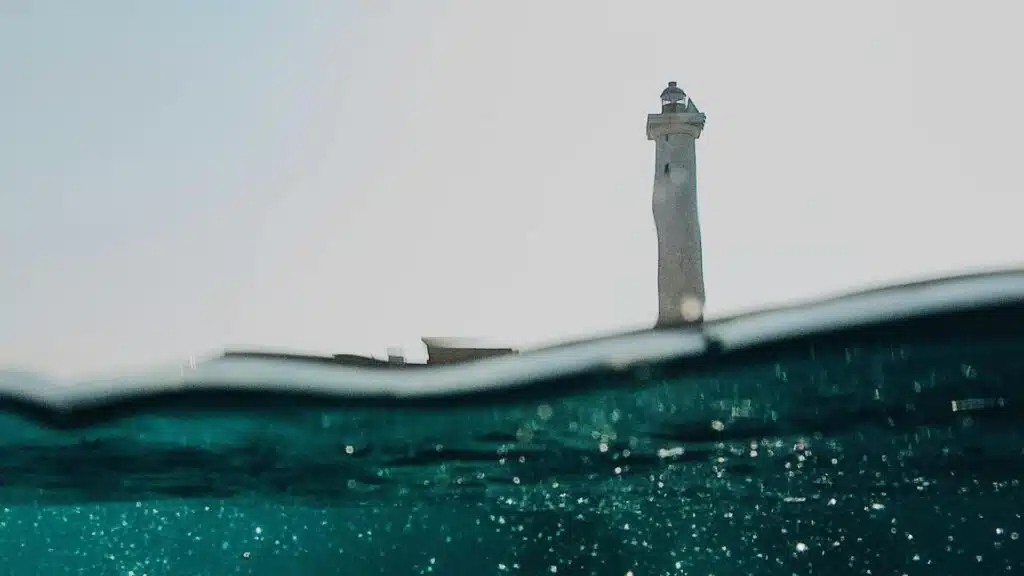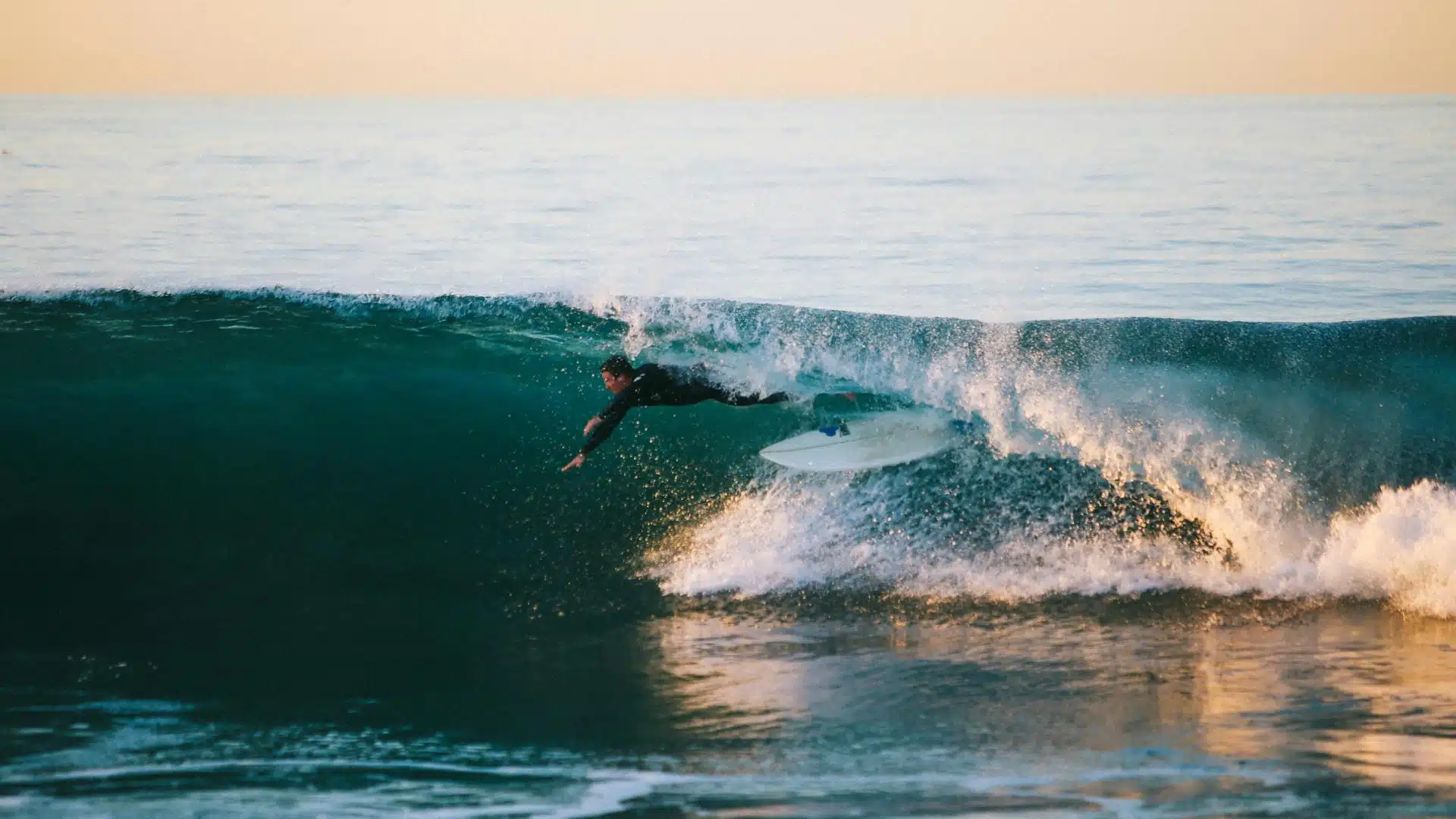Every surfer has fallen off their board at one point or another – but did you know your body instinctively adapts to suddenly being submerged in water? Your heart slows, blood flow shifts and your body enters a state of calm efficiency—conserving oxygen to keep you afloat.
This is the incredible power of the diving reflex, a universal survival mechanism shared by all mammals, including us humans.
So, in this blog post, we’ll delve into the fascinating science behind the diving reflex, exploring how this evolutionary adaptation not only boosts survival in extreme conditions but also equips surfers with practical tools for their underwater adventures.
There’s lots to chat about, so let’s jump in!
Understanding the Diving Reflex
The diving reflex, commonly referred to as the mammalian diving response or the mammalian dive reflex, is a natural reaction that occurs when a mammal is submerged in water, especially cold water.
While it’s often associated with marine animals, this reflex is actually found in all mammals, including humans.
This response is an evolutionary adaptation that assists mammals in surviving underwater. It serves to limit unnecessary oxygen consumption by triggering several physiological changes that optimise our oxygen use, even when breathing isn’t possible.
These changes include a slower heart rate (bradycardia), which helps conserve oxygen by decreasing the overall demand for it in the body.
Another vital component is the increased resistance in blood vessels (peripheral vasoconstriction). This is a physiological response where blood vessels in the extremities (arms, legs, skin) constrict, reducing blood flow to these areas. As a result, this helps to redirect blood flow to vital organs, like the brain and heart, ensuring they receive an adequate oxygen supply.
Blood shunting to essential organs helps the body maintain critical functions during submersion, contributing to increased peripheral vascular resistance.
Understanding this diving response can offer valuable insights for surfers on how they might harness this natural response should they ever find themselves plunged into the sea.
How the Mammalian Diving Response Works

Now that we’ve covered the basics let’s take a closer look at the science behind the mammalian dive reflex. This fascinating and complex process involves multiple physiological and neural mechanisms.
To begin with, the mammalian dive reflex is mainly triggered when your face is submerged in water and when you hold your breath. This combination of sensations triggers your sympathetic nervous system, in particular, the trigeminal nerve. This, in turn, sets off a series of responses that help the body conserve oxygen and keep essential functions going while underwater.
The diving reflex involves three key components:
- Sensory activation (as described above)
- Neural pathways
- Physiological changes
Each plays a vital role in starting and maintaining the diving reflex, allowing the body to adapt effectively to being underwater.
Let’s take a closer look at each in turn:
Sensory Activation
As you now know, the mammalian dive reflex begins when the face is submerged in cold water, triggering sensory receptors in the skin. These receptors send signals to the brainstem through the trigeminal nerve, crucial for kickstarting the diving reflex.
In infants, just having their face in water is enough to activate the diving reflex. However, in adults, both holding their breath and having their face immersed in water are needed to fully trigger the dive response.
This shows that the sensitivity of the diving reflex changes with age and emphasises the importance of sensory signals for starting the reflex.
Neural Pathways
The mammalian dive reflex involves a complex network of nerve pathways that help the body adapt to being underwater.
The key players are as follows:
- The vagus nerve triggers a slower heart rate (bradycardia.
- The rostral ventrolateral medulla (RVLM), a region in the brainstem, is responsible for coordinating the body’s response to the mammalian dive reflex, ensuring that blood flow is redirected to essential organs and that the body’s oxygen supply is effectively managed during submersion.
- Chemoreceptors in the carotid bodies monitor oxygen levels and send signals to the brainstem, which adjusts the body’s response as needed.
When your face is submerged in cold water, it activates the vagus nerve, increasing the body’s ability to conserve oxygen while underwater.
Physiological Changes
When the body experiences the mammalian dive reflex, several critical physiological changes occur to help conserve oxygen and maintain essential functions. We’ve mentioned a few already. However, as they’re so integral to the diving reflex, we thought it would be helpful to dedicate an entire section to them.
So below, we’ll briefly explain a few of the key physiological changes at work:
Cardiac output reduction: One of the fundamental changes is a reduction in cardiac output, which means the heart pumps less blood. This decrease helps save oxygen by lowering the heart’s workload. This reflex also stops the release of anti-diuretic hormone (AD which helps the body maintain fluid balance.
Vasoconstriction: This is where blood vessels narrow to help conserve heat and redirect blood flow to vital organs like the brain and heart. By limiting oxygen use in less critical tissues, the body ensures that essential functions are preserved during submersion.
Bradycardia: This is a marked slowing of the heart rate, a significant part of the mammalian dive reflex. This reduction in heart rate helps the body conserve oxygen, allowing it to sustain vital functions while underwater. Typically, this also reduces blood pressure. Interestingly, bradycardia can occur not only during underwater diving but also during breath-holding on land. The effect becomes more pronounced in colder water, with heart rates potentially dropping as low as 5.6 beats per minute in extreme cases.
Practical Tips for Surfers: How to Harness The Mammalian Diving Response
Surfers and other underwater enthusiasts can harness the mammalian dive reflex to stay calm and conserve oxygen during underwater activities.
Understanding and training the mammalian dive reflex can significantly enhance underwater performance and safety. So, with that said, here are some practical tips to help you make the most of this incredible physiological response:
Training Techniques
Breath-holding exercises are essential for developing a stronger diving reflex and increasing self-control in high-pressure situations. Practising holding your breath while remaining still can significantly improve the efficiency of the diving reflex by training your body to tolerate higher levels of carbon dioxide, enhancing your ability to stay calm underwater.
Controlled Immersion
Gradual exposure to cold water can activate the mammalian diving reflex, aiding in better breath-holding and oxygen conservation.
Controlled cold water facial immersion practices can effectively trigger the diving reflex and help you adapt to underwater environments. This gradual exposure helps acclimate your body to the cold, reducing the shock response and enhancing your ability to stay calm.
Staying Calm Underwater
Staying calm underwater is crucial for safety and can be achieved by focusing on controlled breathing and mental visualisation techniques, such as imagining a peaceful and serene underwater scene.
You could also consider incorporating relaxation techniques like meditation or yoga into your training routine. These can help you remain calm and focused underwater, enhancing your ability to harness the diving reflex.
The Mammalian Diving Response: Our Final Thoughts
The mammalian dive reflex is a remarkable physiological response that increases the likelihood of survival during water submersion by conserving oxygen and maintaining vital organ functions.
For surfers and underwater enthusiasts, practising breath-holding exercises, controlled immersion, and mental visualisation can help harness the diving reflex to stay calm and optimise their underwater performance.
So, the next time you find yourself submerged underwater, remember the power of the diving reflex. Embrace its benefits, practice the techniques discussed, and transform your underwater experience into one of calmness and control.
Looking for a place to stay?
Frequently Asked Questions
Before we leave, we’ll endeavour to answer some of the most frequently asked questions we hear about the mammalian dive reflex:
What is the diving reflex?
The diving reflex is an involuntary physiological reaction activated by facial exposure to water, especially cold water, that conserves oxygen and preserves essential bodily functions while submerged underwater.
How does the diving reflex work?
The diving reflex kickstarts when the face is submerged in water. This triggers sensory receptors that activate the trigeminal and vagus nerves, resulting in physiological responses such as bradycardia, peripheral vasoconstriction, and redistribution of blood, all of which optimise our oxygen use during breath-holding.
Is the diving reflex exclusive to marine mammals?
The diving reflex isn’t exclusive to marine mammals; it’s also present in various other mammals, including terrestrial species and humans.
How can surfers use the diving reflex to stay calm underwater?
Surfers can effectively utilise the diving reflex by practising breath-holding exercises, engaging in cold water immersion, and employing mental visualisation techniques to enhance calmness and conserve oxygen underwater.


